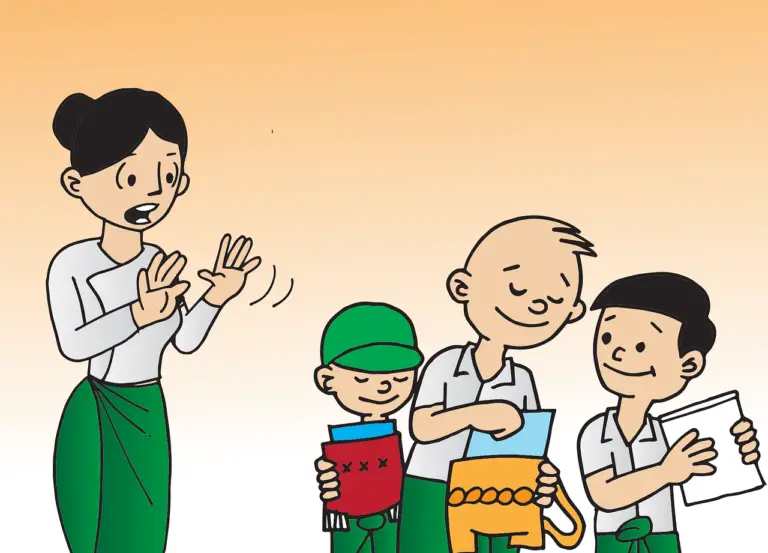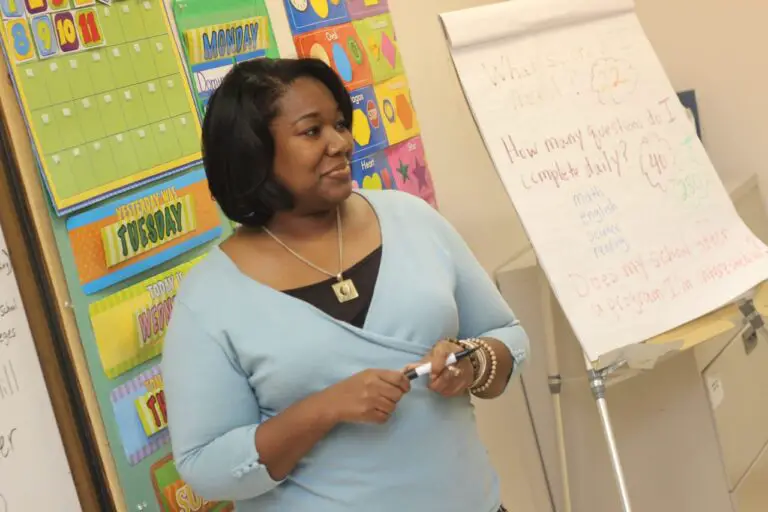Everybody goes shopping at some point, whether it’s to the local market or to a huge department store. That’s why it’s a big part of English teaching.

But if you’re tired of standard worksheets and cookie-cutter exercises, take a look at this list for some interesting and exciting activities that will get your students learning fast and enjoying themselves.
- Virtual Tour Elicitation
- Design a shopping mall
- Shopping role play
- The Price Is Right
- What’s In The Bag?
1. Virtual tour elicitation
I can’t think of a better way to learn about shopping than by going to some shops. If you’re lucky enough to be able to do that with your class, definitely go ahead, but for everyone else, you can get a similar experience with a virtual tour.
Lots of shops have these nowadays, so it’s quite easy to hop online and start zooming around. And of course you could explore a shopping mall or use Google Street to see a high street.
These are great for eliciting language related to shopping. Students can say what they see and start learning what they don’t already know.

Either do it as a whole class on a big screen, or, if you have multiple devices, get students to do their own exploration and write down what new things they discover.
This is perfect for online and in-person classes. It’s fun, interactive and closer to reality than most activites about shopping.
Here are a couple of links that you can get started with, but definitely do some digging and find what’s best for your students:
https://www.360virtualtour.co/portfolio/woking-shopping-centre-virtual-tour/
https://www.morrisons.jobs/360s/MorrisonsStore360.html
2. Design a shopping mall
Whether you call them malls or shopping centres, they’re known around the world. Big buildings full of shops and often featuring some interesting architecture.
Get your students to design one! How you do this depends on your students and what you want to get out of it. It could be as simple as a roughly sketched map of which shops go where, or you could turn it into a construction project making shops out of cardboard.

Before you start, though, it’s definitely worth looking at some shopping centres for inspiration. Get some photos, videos or even link it to a virtual tour you did earlier!
I like to get students to work in groups for this kind of project, discussing which shops should go where, what kind of services they need (restaurants, ATMs, etc.) and how to make it look nice.
3. Shopping role play
Role play is always a good option. And it’s really easy to use when teaching shopping because you have a built-in dynamic between the customer and vendor.
You can do scenarios where students need to haggle over a price, returning broken or ill-fitting items, trying to find something that’s out of stock… the list of ideas is endless.
Role play is completely unscripted. It’s all off-the-cuff improvisation which develops speaking fluency.
As a result, they’re not ideal with absolute beginners and very young children. But for everyone else, they’re fantastic. I use them all the time.
Find out why I think role play is so great in this video from my YouTube channel:
If you decided to do the second activity, designing a shopping mall, you could make this the scene of students’ role plays. Use the shops they included as a setting and act out interactions between people there.

4. The Price Is Right
Some of your students may have heard of, or even watched, the legendary gameshow “The Price Is Right”. It’s a superb format that you can adapt for the ESL classroom.
I use this to focus more on online shopping, as it’s easier to set up that way, but you could just as well do it for brick-and-mortar shopping as well.

Find a bunch of products and their prices. I do this by going onto Amazon. Then I take a screenshot of the listing and put it into a slideshow. Either cover up the price with something you can remove later, or have two slides, the first with the price hidden, and the second with the price revealed.
Do this with a dozen or more items and you’re ready to play.
The rules are super simple.
Show students each item in turn. They have to guess what the price is without going over.
The player who guesses the closest without going over gets a point. If they get it exactly right, they get three points.
If everyone guesses too high, those guesses are removed and everyone gets another guess.
With a small class size, players can compete individually, but with larger groups, divide them into 4-5 groups that have to discuss their guesses. You may wish to select a “leader” for every round who is the one who gets the final decision and says the guess.
Here are a few slides I made for a group of 10-year-old girls. You can use them if you want, but it’s better to choose products that are interesting for your students and meet their learning needs.
5. What’s In The Bag?
A super simple question-and-answer game that’s essentially a spinoff of “20 Questions”.
One student thinks of something they bought and put in their bag. Everyone else takes it in turns to ask yes/no questions about what’s in the bag until someone guesses the right answer.
I recommend playing in groups of 4-6 instead of as a big class, otherwise most students won’t be doing much while everyone else asks questions.

Also, you could limit the scope of what could be in the bag to make it quicker and easier. For example, you could limit it to clothes, or food, or electronic items. Without limits, it’ll take longer but add more interest and challenge.
I enforce the rule that whatever is in the bag must be commonly available in shops and able to fit in a normal sized shopping bag. If you’re not convinced your students will come up with good ideas on their own, you can write some on slips of paper that the student can secretly look at.
Conclusion
I encourage you to use your creativity and imagination when teaching shopping. Take these activities and adapt them to your needs, or even come up with your own ideas!
Shopping varies from culture to culture, so be mindful of what the experience is like for your students and share how shopping works where you’re from. This can lead to some great discussions and you may learn a thing or two!







